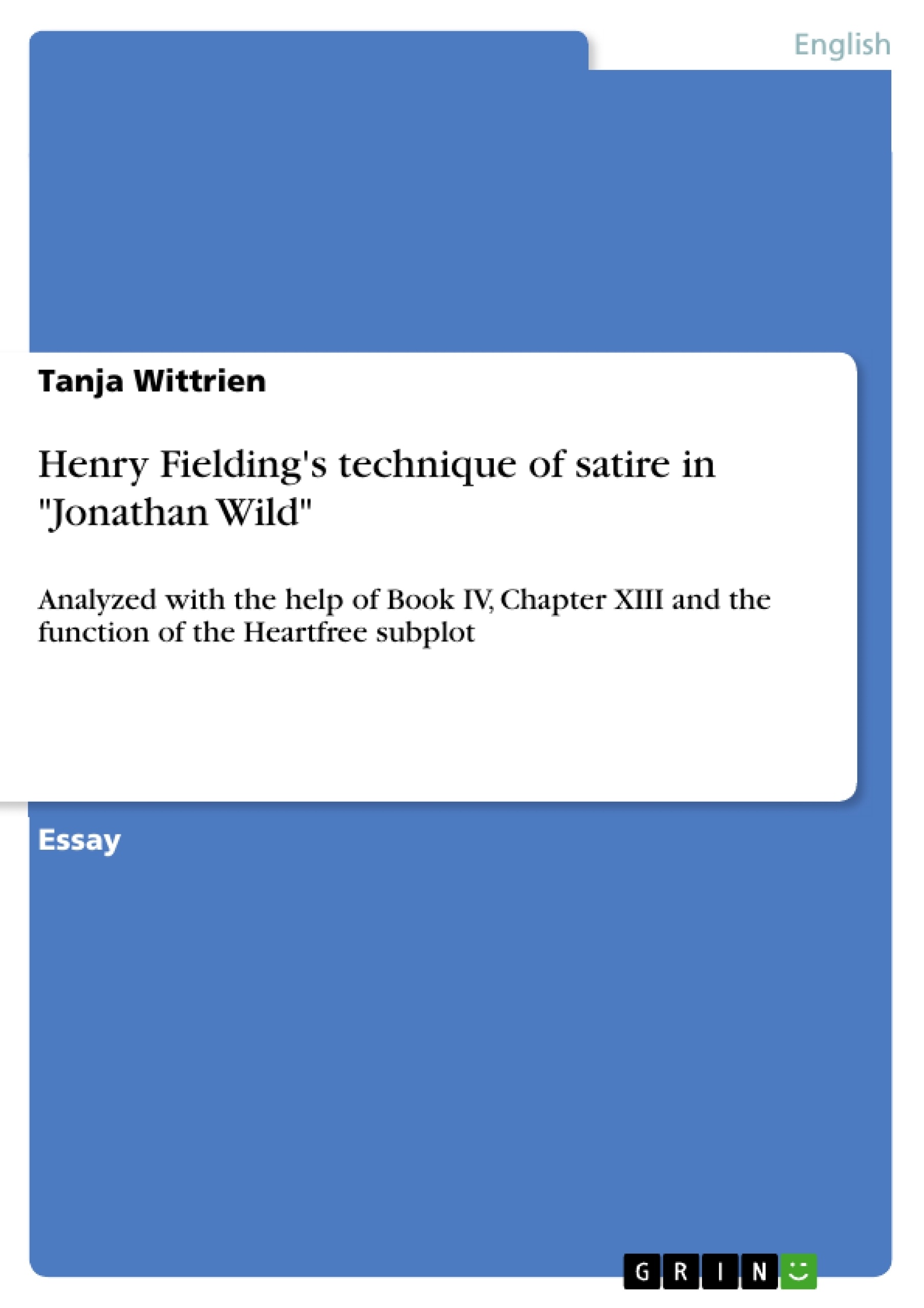An analysis of Henry Fielding's technique of satire with the help of Book IV, Chapter XIII and the function of the Heartfree subplot.
Table of Contents
- Analyse Fielding's technique of satire with the help of Book IV, Chapter XIII
- What is the function of the Heartfree subplot?
Objectives and Key Themes
This essay examines Henry Fielding's Jonathan Wild through two lenses. The first looks at Fielding's use of satire in Book IV, Chapter XIII, while the second explores the function of the Heartfree subplot within the novel.
- Satire and reversal of values
- The "greatness" of Jonathan Wild
- The Heartfree family as a foil to Wild
- Exaggeration as a satirical technique
- Character development and stagnation
Chapter Summaries
Analyse Fielding's technique of satire with the help of Book IV, Chapter XIII
This section focuses on Fielding's use of satire in Jonathan Wild. The essay analyzes Book IV, Chapter XIII, specifically, where Wild's "greatness" is juxtaposed against his criminal activities. Fielding uses exaggeration and ironic language to expose the corruption and immorality of Wild's world, while simultaneously highlighting the absurdity of his self-proclaimed "greatness".
What is the function of the Heartfree subplot?
This section examines the Heartfree subplot and its role in Fielding's satire. The Heartfree family, characterized by love and virtue, serves as a stark contrast to Wild's selfish and morally bankrupt nature. The Heartfree subplot explores themes of family, love, and resilience, while also highlighting the consequences of Wild's actions.
Keywords
Key terms and concepts explored in this essay include satire, reversal of values, character development, exaggeration, and the Heartfree subplot. The essay analyzes how Fielding uses these elements to critique societal norms and present a satirical view of "greatness" in Jonathan Wild.
- Quote paper
- M.A. Tanja Wittrien (Author), 2009, Henry Fielding's technique of satire in "Jonathan Wild", Munich, GRIN Verlag, https://www.grin.com/document/229828




